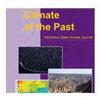巴西赤道边缘晚阿普第世古气候重建:从孢粉学推断
IF 3.8
2区 地球科学
Q1 GEOSCIENCES, MULTIDISCIPLINARY
引用次数: 1
摘要
摘要本研究基于对bragana - viseu、s本文章由计算机程序翻译,如有差异,请以英文原文为准。
Late Aptian paleoclimate reconstruction of the Brazilian equatorial margin: inferences from palynology
Abstract. This study conducted high-resolution paleoclimatic analyses based on the
identification of palynological groups of late Aptian age (biozone
Sergipea veriverrucata) in the Bragança and Codó formations within the Bragança–Viseu,
São Luís, and Parnaíba basins. The analysis comprised 40
palynological samples, with 200 palynomorphs per slide counted when
possible. Bioclimatic analysis was mainly supported by the identification of
botanical affinities, and ecological and climatic parameters such as the
wet/arid trend (Fs/X), Shannon–Wiener diversity, and indicator species
analysis (IndVal) were used. Statistical analyses such as principal
component and cluster analyses were employed to support the paleoclimatic
interpretations. The study recognized 69 genera distributed among the main
groups of living plants, including bryophytes, ferns, lycophytes,
gymnosperms, and angiosperms. It was possible to attribute botanical
affinity in 94.2 % of the taxa, and nine genera occurred in all sections
studied: Afropollis, Araucariacites, Callialasporites, Cicatricosisporites, Classopollis, Cyathidites, Deltoidospora, Equisetosporites, and Verrucosisporites, with Classopollis being the most abundant. The
stratigraphic distribution of the bioclimatic groups (hydrophytes,
hygrophytes, lowland tropical flora, upland flora, and xerophytes) allowed
for the identification of climatic phases: pre-evaporitic, evaporitic, and
post-evaporitic. In the pre-evaporitic phase, the most significant
abundances were between the hygrophytes and upland flora, indicating a
certain level of humidity. Xerophytes were the most abundant in all phases,
with a conspicuous increase in the evaporitic phase, reflecting an increase
in aridity. In the post-evaporitic phase, there was a significant increase
in the upland flora with the return of wetter conditions. This study
confirmed an increasing humidity trend in the analyzed sections, probably
owing to the influence of the Intertropical Convergence Zone that was already
operating during the late Aptian.
求助全文
通过发布文献求助,成功后即可免费获取论文全文。
去求助
来源期刊

Climate of The Past
地学-气象与大气科学
CiteScore
7.40
自引率
14.00%
发文量
120
审稿时长
4-8 weeks
期刊介绍:
Climate of the Past (CP) is a not-for-profit international scientific journal dedicated to the publication and discussion of research articles, short communications, and review papers on the climate history of the Earth. CP covers all temporal scales of climate change and variability, from geological time through to multidecadal studies of the last century. Studies focusing mainly on present and future climate are not within scope.
The main subject areas are the following:
reconstructions of past climate based on instrumental and historical data as well as proxy data from marine and terrestrial (including ice) archives;
development and validation of new proxies, improvements of the precision and accuracy of proxy data;
theoretical and empirical studies of processes in and feedback mechanisms between all climate system components in relation to past climate change on all space scales and timescales;
simulation of past climate and model-based interpretation of palaeoclimate data for a better understanding of present and future climate variability and climate change.
 求助内容:
求助内容: 应助结果提醒方式:
应助结果提醒方式:


